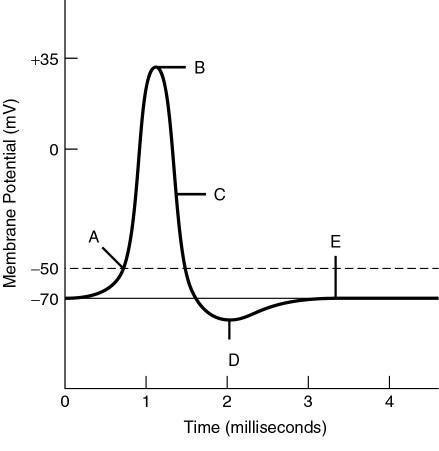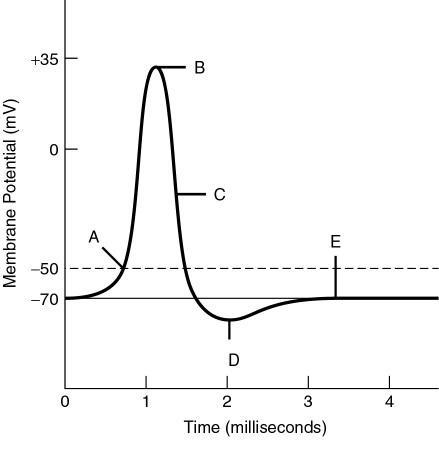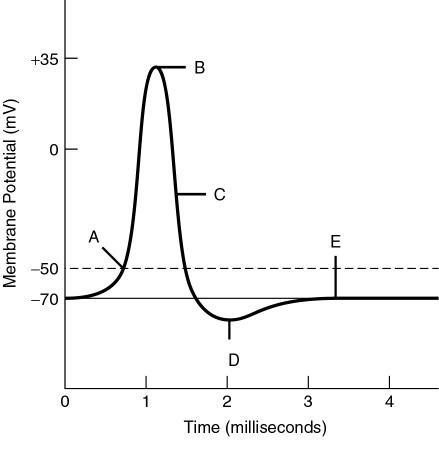Instructions for Side by Side Printing
- Print the notecards
- Fold each page in half along the solid vertical line
- Cut out the notecards by cutting along each horizontal dotted line
- Optional: Glue, tape or staple the ends of each notecard together
Bio II Final Review; Test 4
front 1 Which of the following patterns of reproduction are found only among
invertebrate animals? | back 1 E |
front 2 Sexual reproduction | back 2 B |
front 3 What makes sexually reproduced offspring genetically different from their parents? A) genetic recombination during mitosis B) crossing over during mitosis C) genetic recombination during meiosis D) sexual reproduction does not produce genetically different offspring | back 3 C |
front 4 In close comparisons, external fertilization often yields more
offspring than does internal fertilization. However, internal
fertilization offers the advantage that | back 4 C |
front 5 Mature human sperm and ova are similar in that | back 5 A |
front 6 Which of the following correctly describes a difference between spermatogenesis and oogenesis? A) spermatogenesis results in four mature sperm cells while oogenesis results in one mature egg cell. in spermatogenesis, mitosis occurs twice and meiosis once, while in oogenesis, mitosis occurs once and meiosis twice. B) in spermatogenesis, mitosis occurs twice and meiosis once, while in oogenesis, mitosis occurs once and meiosis twice C) spermatogenesis results in four mature sperm cells, while oogenesis results in one mature egg cell D) spermatogenesis results in one mature sperm cell, while oogenesis results in four mature effe cells. | back 6 C |
front 7 Human sperm cells first arise in the | back 7 C |
front 8 Among human males, both semen and urine normally travel along the
| back 8 D |
front 9 In correct chronological order, the three phases of the human ovarian
cycle are | back 9 D |
front 10 A reproductive hormone that is secreted directly from a structure in
the brain is | back 10 E |
front 11 A primary response by the Leydig cells in the testes to the presence
of luteinizing hormone is an increase in the synthesis and secretion
of | back 11 B |
front 12 Which of the following best describes a model organism? A) It is often pictured in textbooks and easy for students to imagine B) It is small, inexpensive to raise, and lives a long time C) It is well studied, it is easy to grow and results are widely applicable D) It has been chosen for study by early biologists | back 12 C |
front 13 During fertilization, the acrosomal contents | back 13 C |
front 14 In sea urchins, the "fast block" and the longer lasting
"slow block" to polyspermy, respectively, are | back 14 D |
front 15 Which of the following correctly displays the sequence of
developmental milestones? | back 15 C |
front 16 As cleavage continues during frog development, the size of the
blastomeres | back 16 C |
front 17 In all vertebrate animals, development requires | back 17 B |
front 18 From earliest to latest, the overall sequence of early development
proceeds in which of the following sequences? | back 18 E |
front 19 The outer-to-inner sequence of tissue layers in a post-gastrulation
vertebrate embryo is | back 19 C |
front 20 Changes in the shape of a cell usually involve a reorganization of
the | back 20 B |
front 21 66) The embryonic precursor to the human spinal cord is the | back 21 B |
front 22 The least amount of yolk would be found in the egg of a | back 22 D |
front 23 During metamorphosis a tadpole's tail is reduced in size by the process of A) regeneration B) oxidative phosphorylation C) apoptisis D) re-differentiation | back 23 C |
front 24 The nematode Caenorhabditis elegans | back 24 B |
front 25 The arrangement of organs and tissues in their characteristic places
in 3-D space defines | back 25 A |
front 26 Most of the neurons in the human brain are | back 26 C |
front 27 In a simple synapse, neurotransmitter chemicals are released by
| back 27 B |
front 28 A cation that is more abundant as a solute in the cytosol of a neuron than it is in the interstitial fluid outside the neuron is A) Ca2+ B) Na+ C) Cl- D) K+ | back 28 D |
front 29 The membrane potential in which there is no net movement of the ion across the membrane is called the A) equilibrium potential B) action potential C) graded potential D) threshold potential | back 29 A |
front 30 The concentrations of ions are very different inside and outside a nerve cell due to A) sodium-potassium pumps B) symports and antiports C) sodium and potassium channels D) osmosis | back 30 A |
front 31
Why are action potentials usually conducted in one
direction? | back 31 B |
front 32  The minimum graded depolarization needed to operate the voltage-gated sodium and potassium channels is indicated by the label A) A. | back 32 A |
front 33  The cell is not hyperpolarized; however, repolarization is in
progress, as the sodium channels are closing or closed, and many
potassium channels have opened at label | back 33 C |
front 34  The neuronal membrane is at its resting potential at label | back 34 E |
front 35 In multiple sclerosis the myelin sheaths around the axons of the brain and spinal cord are damaged and demyelination results. How does this disease manifest at the level of the action potential? I. Action potentials move int he opposite direction on the axon II. Action potentials move more slowly along the axon III. No action potentials are transmitted A) only I B) only II C) only III D) only II and III | back 35 B |
front 36 Receptors for neurotransmitters are of primary functional importance
in assuring one-way synaptic transmission because they are mostly
found on the | back 36 C |
front 37 Self-propagation and refractory periods are typical of | back 37 A |
front 38 A toxin that binds specifically to voltage-gated sodium channels in
axons would be expected to | back 38 B |
front 39 Choose the correct match of glial cell type and function. | back 39 A |
front 40 Myelinated neurons are especially abundant in the | back 40 D |
front 41 Exercise and emergency reactions include | back 41 B |
front 42 Cephalization, the clustering of neurons and interneurons in the
anterior part of the animal, is apparent in | back 42 C |
front 43 In a cephalized invertebrate, the system that transmits
"efferent" impulses from the anterior ganglion to distal
segments is the | back 43 B |
front 44 Bottlenose dolphins breathe air but can sleep in the ocean because
| back 44 E |
front 45 If a doctor attempts to trigger the patellar tendon reflex and a lack
of response occurs, what are potential regions where pathology might
exist? | back 45 D |
front 46 Which of the following structures are correctly paired? A) forebrain and medulla oblongata | back 46 D |
front 47 33) The coordination of groups of skeletal muscles is driven by
activity in the | back 47 B |
front 48 When Phineas Gage had a metal rod driven into his frontal lobe, or
when someone had a frontal lobotomy, they would | back 48 C |
front 49 Bipolar disorder differs from schizophrenia in that | back 49 A |
front 50 After suffering a stroke, a patient can see objects anywhere in front
of him but pays attention only to objects in his right field of
vision. When asked to describe these objects, he has difficulty
judging their size and distance. What part of the brain was likely
damaged by the stroke? | back 50 D |
front 51 The correct sequence of sensory processing is | back 51 B |
front 52 Which type of receptor would you expect to be most abundant in the antennae of a moth? A) chemoreceptors B) thermoreceptors C) mechanoreceptors D) electroreceptors | back 52 A |
front 53 Partial or complete loss of hearing can be caused by damage to the I. axons of the neurons associated with each hair cell that carry information to the brain II. hair cells (the sensory receptors) in the cochlea III. tympanic membrane, or eardrum A) only II B) only III C) I, II, and III D) only I and II | back 53 C |
front 54 Damage to the vestibular nerve will likely impair the function of the A) sense of balance B) primary visual cortex C) sense of hearing D) sense of taste | back 54 A |
front 55 Sensory transduction of light/dark information in the vertebrate
retina is accomplished by | back 55 E |
front 56 Most of the chemosensory neurons arising in the nasal cavity have
axonal projections that terminate in the | back 56 C |
front 57 What structures would neurobiologists look for if they are interested in determining if an animal can see in color? A) electroreceptors B) lens C) opsins D) pupil | back 57 C |
front 58 Which sensory direction is NOT encoded by a difference in neuron identity? A) salty and sweet B) spicy and cool C) loud and faint D) red and green | back 58 C |
front 59 The "motor unit" in vertebrate skeletal muscle refers to
| back 59 D |
front 60 The muscles of a recently deceased human can remain in a contracted
state, termed rigor mortis, for several hours, due to the lack of
| back 60 B |
front 61 Which of the following is the correct sequence that describes the
excitation and contraction of a skeletal muscle fiber? | back 61 E |
front 62 An endoskeleton is the primary body support for the | back 62 C |
front 63 Chitin is a major component of | back 63 C |
front 64 A ball-and-socket joint connects | back 64 D |
front 65 Displays of nocturnal mammals are usually | back 65 C |
front 66 Upon returning to its hive, a European honeybee communicates to other
worker bees the location of a nearby food source it has discovered by
| back 66 B |
front 67 A stickleback fish will attack a fish model as long as the model has
red coloring. What animal behavior idea is manifested by this
observation? | back 67 A |
front 68 The proximate causes of behavior are interactions with the
environment, but behavior is ultimately shaped by | back 68 B |
front 69 Which of the following is required for a behavioral trait to evolve by natural selection? A) The behavior is determined entirely by genes B) An individual's reproductive success depends in part on how the behavior is performed C) The behavior is the same in all individuals in the population D) The behavior is not genetically inherited | back 69 B |
front 70 Listed below are several examples of types of animal behavior. Match
the letter of the correct term (A-E) to each example in the following
question. | back 70 A |
front 71 Listed below are several examples of types of animal behavior. Match
the letter of the correct term (A-E) to each example in the following
question. | back 71 C |
front 72 Listed below are several examples of types of animal behavior. Match
the letter of the correct term (A-E) to each example in the following
question. | back 72 E |
front 73 Every morning at the same time, John went into the den to feed his
new tropical fish. After a few weeks, he noticed that the fish swam to
the top of the tank when he entered the room. This is an example of
| back 73 C |
front 74 Fred and Joe, two unrelated, mature male gorillas, encounter one
another. Fred is courting a female. Fred grunts as Joe comes near. As
Joe continues to advance, Fred begins drumming (pounding his chest)
and bares his teeth. Joe then rolls on the ground on his back, gets
up, and quickly leaves. This behavioral pattern is repeated several
times during the mating season. Choose the most specific behavior
described by this example. | back 74 A |
front 75 Female spotted sandpipers aggressively court males and, after mating,
leave the clutch of young for the male to incubate. This sequence may
be repeated several times with different males until no available
males remain, forcing the female to incubate her last clutch. Which of
the following terms best describes this behavior? | back 75 C |
front 76 Which of the following best describes "game theory" as it
applies to animal behavior? | back 76 A |
front 77 Animals that help other animals of the same species | back 77 C |